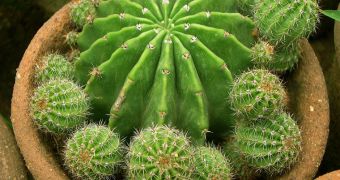For most of our planet's history, succulent plant groups were not too diverse, and did not occupy much of the land surface. But that all changed 5 to 10 million years ago, when biodiversity among these groups exploded, creating numerous new species. The most known succulent plant is the cactus.
By analyzing how cacti evolved, researchers recently developed a better understanding of the evolution of plant communities worldwide. At the time when cacti speciation occurred, the entire world was in a process of developing numerous new plant species, and the succulent plants group were no exception.
Among the most widely-proposed causes for this level of speciation (creation of new species), experts propose prolonged dry spells and lower levels of atmospheric carbon dioxide (CO2).
The time span between 5 and 10 million years ago is known as the late Miocene. According to expert, numerous new habitats became available for plants at that time, and this may have also contributed to the raise of so many new species.
Details of the new study, which was conducted by biologists at the Brown University, appear in the latest early online issue of the esteemed journal Proceedings of the National Academy of Sciences.
“The cacti, as a group, have been around for a while, but most of the species diversity that we see today was generated really recently,” says Brown postdoctoral scientist and lead author Monica Arakaki.
“Cacti were actually present on the landscape for millions of years – looking like cacti and acting like cacti – before they began their major diversification,” explains corresponding author Erika Edwards.
She holds an appointment as an assistant professor of biology at the Brown Department of Ecology and Evolutionary Biology. Experts from the Oberlin College and the University of Zurich, in Switzerland, were also a part of the new study.
In order to conduct the new study, experts had to sequence the chloroplast genomes of multiple members of the Cactaceae group, whose fossils spanned millions of years. They then used these data to construct an evolutionary tree for angiosperms, the class that includes 90 percent of all plants on Earth.
The Cactaceae group diverges from its last common ancestor with other angiosperms more than 35 million years ago, but it wasn't until the late Miocene that rapid speciation began occurring.
“We suggest that a rapid expansion of available habitat (rather than any particular new ‘key’ innovation) during the late Miocene was a primary driver of the global diversification of plant lineages already possessing a preadapted succulent syndrome,” experts write in the PNAS paper.
“Against a backdrop of increasing global aridity, a sharp CO2 decline is a plausible driver of the simultaneous expansion of C4 grasslands, the clustering of new C4 origins, and the diversification of succulent lineages,” they conclude.
Funds for this investigation were provided by the US National Science Foundation (NSF), Science Blog reports.

 14 DAY TRIAL //
14 DAY TRIAL //